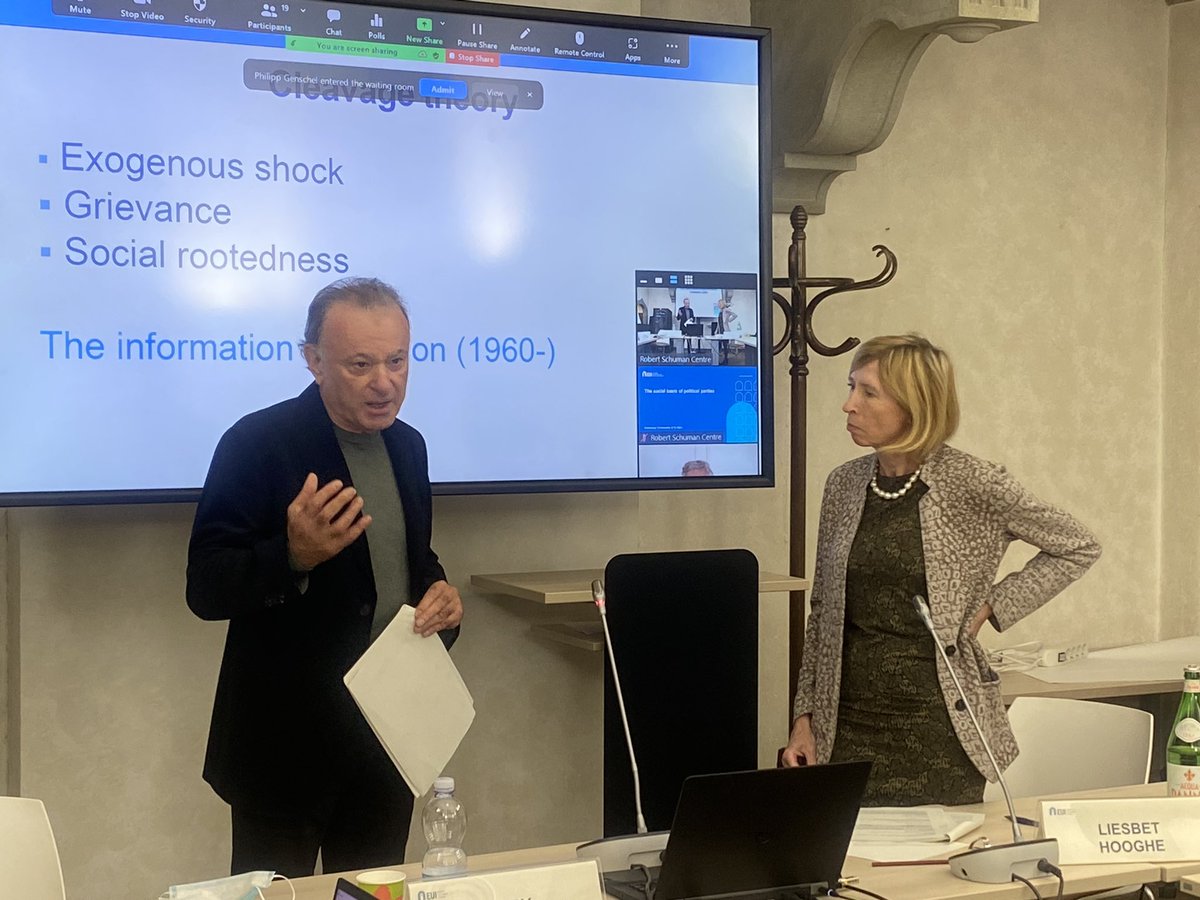
'The Social Roots of the Transnational Cleavage' with
@HoogheLiesbet & Gary Marks is starting!
➡️ "Education, occupation, life experiences have a major impact on people's political belonging"

@HoogheLiesbet & Gary Marks is starting!
➡️ "Education, occupation, life experiences have a major impact on people's political belonging"


People voting for green, alternative, libertarian (GAL) are not involved in the production of the information society, they are not engineers, they work in knowledge intensive fields (scientists, arts designers etc); they are also predominantly women (/1)
Women in female-dominated fields vote green. So there is something about the context. When you put women together or men together you get different results #gendermatters (/2)
Traditional, authoritarian, nationalistic (TAN) parties get votes in occupations vulnerable to automation (construction, drivers, etc) & male-predominant fields (security for instance) (/3)
Male-dominant groups vote TAN: it doesn't influence women in male-predominant environment but the contextual & socializing effect is very strong on men (/4) #gendermatters
Conclusions: #cleavage theory is valid today in the sense that we still deal with groups when analysing political affiliations. And #gender is at the core of the cleavage (/5)
This concludes our live tweeting of this very insightful presentation by our outstanding @HoogheLiesbet & Gary Marks, organised within the framework of the @EUI_EGPProg
@cicchilore @popova_martina @Ej_Europe
@cicchilore @popova_martina @Ej_Europe
• • •
Missing some Tweet in this thread? You can try to
force a refresh





